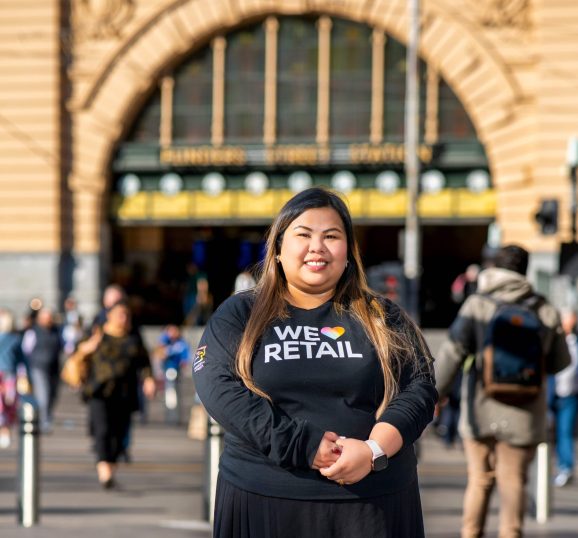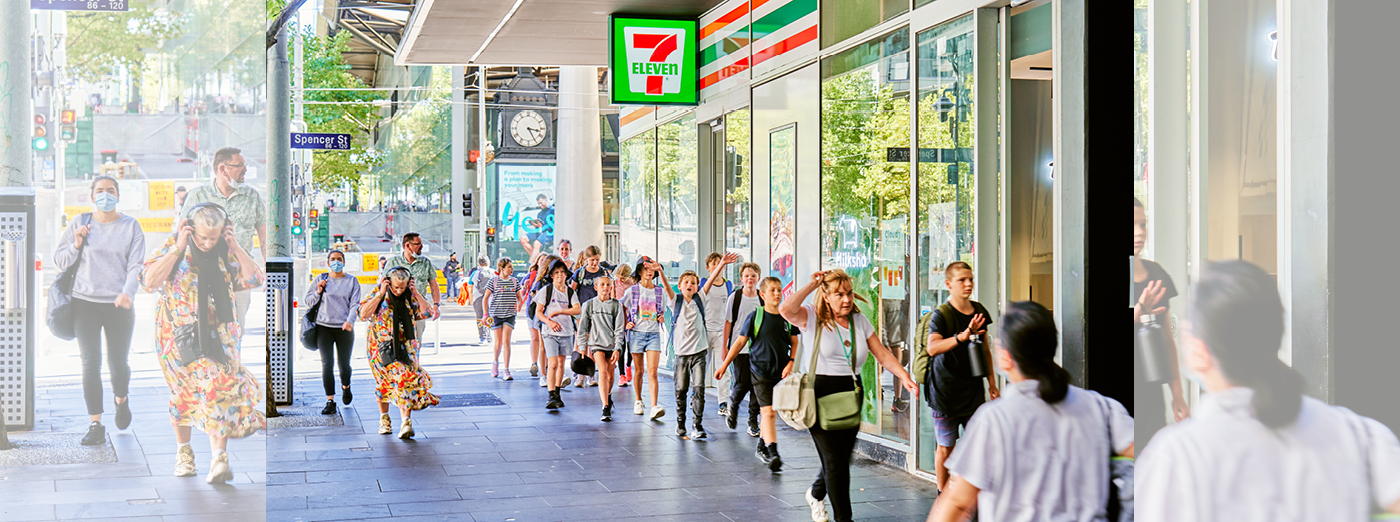State of the Market
written by Heidi Pialago
12/03/21In 2019, the Australian retail industry did $300 billion of consumer spending.
PwC expected in 2020, overall Australian household consumption would take a significant dip of 8-11% and only see a recovery to pre-COVID-19 levels in 2022. It continued to say Australian credit card data for May 2020, highlighted a plunge of more than 10% in household consumption.
This may have been worse if not for Job Keeper, which 60% of Australian businesses registered for.
In December retail trade shrunk in Victoria by 6.8%, the largest fall in Australia. It’s well known, and even expected, that online retail has surged whilst bricks and mortar shopping has fallen during the pandemic.
As a result, retailers are seeking more flexibility with rent agreements, including shorter leases, bigger incentives, and no fixed rent, but rather turnovers only.
Landlords say, they have given $1.6 billion in rent relief during the pandemic. It’s a common feeling amongst landlords that the government subsidies were one sided to the tenant with little or no assistance given to landlords during the pandemic.
Nevertheless, retail spending in Australia has weathered the COVID-19 storm remarkably well to date, compared to the rest of the world.
After a significant drop in spending in the June quarter, the September quarter rebound has more than made up for retail sales lost in 2020. Unfortunately, not everyone is benefiting, with clothing, cafés, and most notably department stores lagging behind. For those retailers who missed out during Christmas trade, they will find it increasingly difficult to hold on this year.
Despite the difficult conditions, interestingly the number of insolvencies in the sector in 2021 has dropped significantly. In 2019, almost 500 retailers had entered into administration by October, while in 2020 this dropped to around 300. Yes, incentives and the Government’s protection laws played a role here, but the facts remain.
Overall, retail has fared better than almost all other markets. Australia has handled the virus with some success, and when the markets reopened – the bounce back was fantastic. Yes, we are living in a time when control and planning couldn’t be further from our reach – nevertheless, there is nowhere else I would rather be, and there are millions of people throughout the world that agree.
The national average shopping centre vacancy rate increased to the highest level in more than 20 years. Including CBD retail and Large Format Retail, the vacancy rate increased to 6.3%. Personally, I feel the number is actually higher. These figures don’t consider holdovers – short terms leases – tenants not paying rent, and the like.
Historically, Shopping Centre owners have made bold moves with signature tenants to preserve occupancy and differentiate their centres.
In the current market, problems facing malls can no longer be solved by leasing to new and fresh tenants. Malls are being forced to rethink their strategic evaluation that will drive traffic into their malls. Also, looking at the highest and best use of the underlying land and demand for conversion of their real estate.
Repurposing shopping centres is a far bigger problem in the US, however it is something Australian landlords are paying very close attention too. Conversion to medical, apartments, community centres, hotels, childcare, aged care, car show rooms, last mile warehousing, other creative Omni channel platforms, are just some of the conversion ideas we are seeing overseas and now talked about here in Australia.
The largest forecast for reduction in retail space will come from department stores.
On the flip side we are seeing Large Format Retailing like, homewares, electronics, and home furnishing showrooms forecast to record the strongest growth in floorspace.
Widely talked about is JB Hi-Fi’s recent results. Over the six months from July through December, sales across the group, rose by 24% to $4.9 billion. Online sales rising to a massive 162%. Their net profit rose by 86%! COVID has been good for their business.
Some department stores in Australia have reported at 76% drop in Victorian sales last year. COVID has not been good for their business.
In 2020, Target announced a massive restructuring that would see many of its stores close their doors or converted into Kmart stores. It came after parent company Wesfarmers deemed the current business model “unsustainable”.
Wesfarmers managing director Rob Scott said in a statement: “For some time now, the retail sector has seen significant structural change and disruption”.
In 2021, we can expect to see retailers making moves within their retail network for the sole purpose of cost savings, as my good friend Kate Bailey who looks after CBRE Research likes to say, there is ‘flight to quality’.
CBRE reported that demand will be driven mostly by domestic retailers. Many such retailers will be looking to capitalise on the current downturn to conduct flight-to-quality relocations. With closures of underperforming locations set to continue, net growth in the number of stores will be limited.
The demand for prime CBD retail space will recover as employees gradually return to the office and lower rents attract upgrading demand. This start and stop dance we are having here in Victoria is not great for business.
While neighbourhood retail will continue to perform well as consumers opt to shop locally, malls lacking strong residential catchments and clear purpose will struggle. The global shift to omnichannel retail may encourage some landlords to convert underperforming assets to last mile delivery hubs to service online retail delivery – it’s really ironic if you think about it.
The former Westfield retail empire, now in the hands of European Unibail-Rodamco, has warned investors it will not pay a dividend until 2023 and will exit its US-based assets in the coming year, as it works through the impact of the global pandemic. Income was down by 24% for the Group, mainly driven by the impact of rent relief.
The UK operations, were hit the hardest, falling 49.3%. In Europe, sales were down 19.1%, while in the US the fall was 28%.
Telstra CEO, Andy Penn said “We think now is the right time to bring back ownership of our retail stores to ensure a consistent and integrated customer experience across our online channels and entire store network”.
He went on to say that as more customers interacted with the business online, as a result of the COVID lockdown it became clear that ownership of all retail touch points was necessary, “as a way of more flexibly dealing with customer needs”.
This is a telecommunication company who is leaning on retail stores to communicate with their customers with the best possible experience.
Telstra has more than 60 Telstra-owned and operated stores, with another 270 branded stores. Telstra recently announced they will be taking back all their retail stores and run them as company stores to ensure they can control the customer experience.
Last month, 243-year-old British department store chain, Debenhams, was acquired by Boohoo, a 14-year-old online fast fashion retailer with annual sales of more than £1.2bill and a market value of £4.4 billion. For just £55 million, Boohoo acquired all of Debenhams’ intellectual property assets, including its customer data and online busines. Boohoo has no plans to keep Debenhams 120-odd remaining stores.
More recently UK online retailer ASOS, valued at £5 billion purchase fashion icon Topshop. ASOS is paying administrators £330 million, but in a similar situation to Boohoo, ASOS has no plans to keep the Top Shop stores.
Last year, Kogan.com paid $4.4 million for the brand name, domain name and customer database of national retailer Matt Blatt. Four years earlier, Kogan.com bought the intellectual property of collapsed iconic retailer Dick Smith including its e-commerce business and customer database.
What does this all mean?
Retailers who have lost a genuine connection and purpose to their customers – will not survive. Yes, COVID has brought about their demise earlier than expected, but they have been looking down the barrel for some time now.
Stephen Younan, who is a great Australian retailer and partner to NIKE and Samsung, famously said – as a retailer we ask ourselves all the time, if we were to close down tomorrow would anyone care, or worse, even notice? It’s a powerful question, retailers and all business need to ask themselves daily.
To highlight the point, let’s take a look at some of the mission statements from very relevant companies who continue to grow, no matter what the market conditions may be.
Google – To organise the worlds information and make it universally accessible and useful
Coca-Cola – Fresh the world
Walt Disney – Make people happy
NIKE – Bring inspiration and innovation to every athlete in the world. If you have a body, you are an athlete
TED Talk – Spread ideas
When there is a clear understanding from a retailer of who they are, and who they are here to serve, they have a purpose and direction no matter what the market conditions. All the brands that disappeared in the last 5 years, lost touch with their customer and purpose. Yes, the market is tough, but when you don’t have a loyal and committed customer base – who is going to fight for you when tough times come along – and it is always going to happen.
Retailers without a clear mission, purpose or vision are victims to this market, but are they really victims? Or perhaps, they are just not relevant in a competitive global market.
The landlords, retailers and Councils all shifting their strategies in line with the market will thrive.
Landlords are currently shifting their priorities from record rents, to reducing vacancy at any cost. Looking at their retail mix, finding ways to innovate, and improve foot traffic productively. This will see retail sales improve, centres cash flows, and ultimately, values.
I genuinely believe there is a generational opportunity to rethink how the retail market has been working until now – and creating a platform that is not only sustainable and productive, but also meaningful and purposeful.
Retail doesn’t have to be a pain in the butt for owners. Imagine a world when landlords and retailers become actual partners, where there is actual understanding and interest in how each organisation operates, profits and grows. Why can’t retail go back to being a community hub, integrated into communities and people’s lives. A place people enjoy and want to be a part of.
Imagine what a retailer would do to be a tenant in that type of centre. Yes, this may be completely farfetched and crazy, but hey so was all of 2020! Everything is up for discussion now.
Australia also appears to lag a number of comparable countries in its development of online retailing. The best estimate is that online retailing represents 6% of total Australian retail sales, made up of 4% domestic sales online ($8.4 billion) and 2% from overseas ($4.2 billion).
COVID-19 has quickly driven the increase in online retail penetration sharply to an estimated 13.3%, more than double from 2019 – a number originally not expected to be reached until 2024.
As the shift to e-commerce transforms shopping behaviour, retailers will focus on refining their online offering. While portfolio rationalisation and lease restructuring are set to continue, rising space availability will provide retailers with opportunities to reduce rental expenses while enhancing the quality of their store network. CapEx for new leases and store fitout will remain very tight.
Amazon Australia has recently reached $1 billion of sales in Australia a 99.4% jump from the year prior. Amazon’s US parent entity recently reported its fourth-quarter sales of $US125.6 billion ($163 billion), a 44% rise on the same quarter in 2019.
According to Mastercard, 74% of the new retail businesses registered since April 2020 were online only retailers.
As 2021 evolves, retailers will look at each store’s location, size, and purpose, as well as how each location can complement the retailer’s digital strategy. This will shrink or change the physical footprint of many brands. For example, some store locations will serve as fulfillment centres for online orders, or as hubs for buy online.
Physical stores oriented toward actual shopping will not go away, but they will continue to evolve, with a continued focus on safety and convenience.
With the original mission of a physical store being product discovery and browsing, retailers will need to develop strategies to allow consumers to do this safely and comfortably while reducing friction.
It could be more of an emphasis on immersive experiences online and increased adoption of contactless purchases. Stores may serve as destinations for consumers to touch and feel products, but then order them online. Therefore, they would be less densely packed with products and people, and serve more as small showrooms.
There is a major debate playing out now between landlords and retailers about online sales being captured by landlords. Both sides of the rational, but ultimately if online and in store retailing is becoming one platform, retailers need to surrender to this trend and landlords need to support its growth with their real estate.
While Australia’s online market represents only 12-13% of total retail sales, in the UK it now represents 30% of sales. In the US, this number is 44% astonishingly up from 15% in 2019. The speed of growth globally is clear – this horse has bolted. Landlords and retailers need to adjust their thinking quickly if they want to survive 2021.
A great example locally is Rebel Sport, where their ‘click-and-collect’ service now accounts for 49% of all online sales. Baby Bunting online sales including click and collect is up 95%. However, the company still considers the store network central, with more than 90 per cent of sales occurring or being completed in stores.
People around the world experience the ease of ordering whatever they want at a click of a button from the comfort of their own smart phone. But data shows that more than 88% of items added to carts for checkout are abandoned, meaning that there is significant hesitation towards buying everything online. Shopping in person, and getting to see, touch, and smell the items you want to buy is something that technology is still a long way from replacing- and architects and interior designers know this. In conclusion, there’s a lot happening and fast – it’s close to impossible to predict and forecast at the moment and the speed of change is incredible. Nevertheless, how exciting is this? In a market that was in desperate need of a kick in the pants, we now have the opportunity to be a part of the revolution that is taking place within the retail community.

Contact a retail specialist
Send us a message and one of our friendly agents will get back to you.














